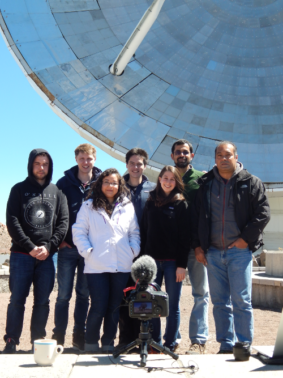
During the period 4-10 April 2017, the LMT participated in the Event Horizon Telescope (EHT) experiment to image the supermassive black hole at the center of our Galaxy.
During the period 4-10 April 2017, the LMT participated in the Event Horizon Telescope (EHT) experiment to image the supermassive black hole at the center of our Galaxy, and thereby improve our understanding of these exotic objects as well as test fundamental physics in an extreme gravitational field.
This year the EHT network was set up by eight of the world´s major millimeter-wavelength telescopes: the Atacama Large Millimeter Array (ALMA), South Pole Telescope (SPT), Atacama Pathfinder Experiment (APEX), James Clerk Maxwell Telescope (JCMT), Submillimeter Array (SMA), Submillimeter Telescope (SMT), Institut Radioastronomie Millimétrique (IRAM) 30-m, and the LMT.
All of the facilities participated in simultaneous observations at 1.3 mm towards the Galactic center black hole and M87. The recorded data were synchronized using hydrogen maser atomic clocks at each site and stored on Mark 6 dedicated high-speed recorders. All the disk-modules have arrived to the Haystack Observatory for correlation and the initial stages of the data reduction, except for those in the South Pole Telescope, which will be shipped until October.
Weather conditions for the 5 observation nights were typically very good across the array, and for the main EHT targets (M87, SgrA*) as well as AGN sources (3c279, OJ287, NGC1052, CenA) all the projected allocated observations were completed. At this stage, initial detections have been found to all facilities for AGN calibrators. This is a very encouraging news as it verifies setup and operation at all the sites processed so far. The first scientific results of the project are expected by the first half of 2018.